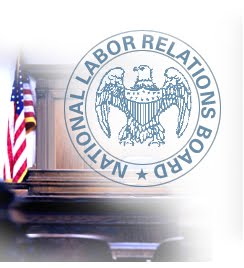Search
Labor Board delivers a three-punch knockout for unions
 Yesterday, the National Labor Relations Board issued three very union-friendly opinions that could have an effect on the way you conduct business. I discuss these opinions and the immediate impact they will have on certain employers after the jump…
Yesterday, the National Labor Relations Board issued three very union-friendly opinions that could have an effect on the way you conduct business. I discuss these opinions and the immediate impact they will have on certain employers after the jump…
* * *
Dana Corp. is overturned.
In Lamons Gasket Company, the Board (3-1) decided that if an employer voluntarily recognizes a union as a collective bargaining representative for a particular unit of the workforce, then employees in that bargaining unit must wait at least six months to file a decertification petition. Previously, under Dana Corp., the Board allowed for an immediate challenge to the union’s status by 30% of employees or a rival union.
In a scathing dissent, Member Hayes criticized the majority’s “purely ideological policy choice,” as disturbing Board precedent that was reasonably designed to effect a “‘finer balance’ of interests that better protects employee free choice.”
Takeaway: This one really affects employees more than it does employers. If an employer chooses to voluntarily recognize a union without a secret ballot election, then the employees are stuck with that union for at least six months, and possibly up to one year.
The Board restores the “successor bar” doctrine.
In UGL-UNICCO Service Company, the Board (3-1) overruled a prior 2002 Board decision, which created an immediate window after a sale or merger for the union’s status to be challenged by 30% of employees, the new employer, or a rival union. Under the new rule in UGL-UNICCO, an existing union will have at least six months after the parties’ first bargaining session and no more than one year after the start of bargaining to bargain with the successor company.
In his dissent, Member Hayes accused the majority of bringing back the “successor bar” doctrine in order to “service the ideological goal of insulating union representations from challenge whenever possible.”
Takeaway: Buyer beware. If you are considering purchasing a unionized company, recognize that you will have to bargain in good faith with the current union for at least six months before anyone can challenge the union’s continued majority status.
It just got easier to cherry-pick and unionize smaller bargaining units.
In Specialty Healthcare and Rehabilitation Center of Mobile, the Board (3-1) returned to the application of its “traditional community-of-interest approach” in determining what is an appropriate bargaining unit in a nursing home. Going forward, in any case in which a party contends that a petitioned-for unit containing employees “readily identifiable as a group who share a community of interest” is nevertheless inappropriate because it does not contain additional employees, the burden is on the party so contending to demonstrate that the excluded employees share an overwhelming community of interest with the included employees.
In his dissent — sense a theme here? — Member Hayes complained that “the majority accepts as the definitive standard for unit determinations in all industries an ‘overwhelming community of interest’ test that will make the relationship between petitioned-for unit employees and excluded co-workers irrelevant in all but the most exceptional circumstances.”
Takeaway: Good luck modifying the bargaining unit that a union proposes. You’ll need it. As Seth Borden notes in this post at Labor Relations Today, this decision now clears the way for unions “to organize sub-units of an employer — such as employees of one department — as opposed to an entire facility.” Imagine having to negotiate with ten different micro-bargaining units. Oy!
 The Employer Handbook Blog
The Employer Handbook Blog


